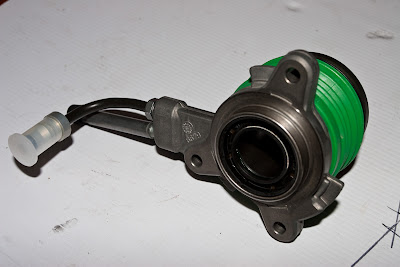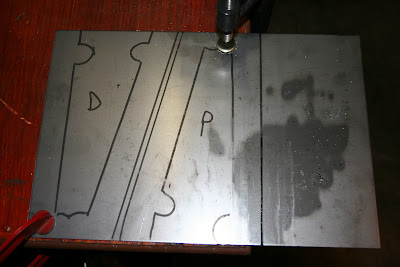
So yesterday I posted about how we cut down the gearbox input shaft. Only it wasn’t yesterday, it was more than a month ago. That’s over 8% of the year since my last post. Life is passing by too fast. Many thanks to those of you who have been bugging me to write something 
One of the reasons for the lack of a post is that not much has happened. Well, a big thing has happened actually. You see, several months ago we decided to assemble as much of the suspension as we could. The right-rear needed a fair amount of force to get it in, which was a tad worrying. Then we got to the left-front. We had already made a plan for one of the suspension bolts, to get it into the bracket. This was on account of there simply not being enough space for the bolt-head to get past one of the chassis struts. However, when we put the whole wishbone setup on, it was visibly apparent that there were alignment issues. We went back to Locost SA, and Brad was very helpful in offering a number of solutions.
Ultimately we decided to send the chassis back to the manufacturing plant to have the struts and brackets chopped out, and then welded on again with the chassis clamped into the jig. This is the only way to ensure we don’t just make the problem worse.

So now we wait with baited breath to see if our body panels still fit when the chassis comes back. I must commend Brad (Locost SA) for his openness and willingness to help. Manufacturing errors can creep into any process, and it’s how the company responds when errors are found that really matters. Top marks to Locost SA.

So what has been done in the meantime? Well, we’ve got our hydraulic clutch mechanism. It’s a standard part from a Ford Mondeo. Hermann has been hero again to organise the associated tubing and connections. This includes the inlet tubing and a “remote bleed” tube. The original Ford fittings are simply removed, and the new hoses attached. With this we have all our hydraulics organised.
A bit of work was done on the engine mount brackets. A piece of 4mm steel plate was sourced to be used as the chassis platform to which the engine brackets will connect. These were traced out before the chassis was sent off.
Then the tool-of-the-year, the jigsaw, was used to cut it out. I never realised just how useful a jigsaw is.

There are such a variety of blades that come for this thing! It zips through wood and aluminium, and is no slouch when it comes to plate steel.

Special “high-speed” blades were purchased, and a little oil was used just to try to keep the temperature down. The jigsaw (on a medium speed setting) was able to cut about 1 cm in 10 seconds – so a couple of minutes per cut. It did spray up a surprising amount of metal shavings, so eye protection is recommended.
That has been about it – we’ve been a bit on-hold with the chassis problems. I have been thinking a bit about the electronics, and will post some info when I formulate some conclusions. Please drop in a comment, as I would be interested in hearing feedback of any sort.

And don’t forget, if you want to see more pictures they are all on display at my PicasaWeb site.
B